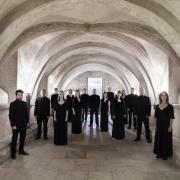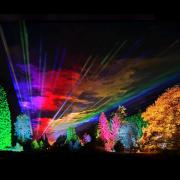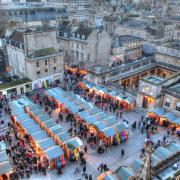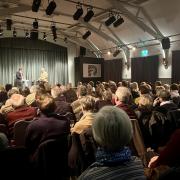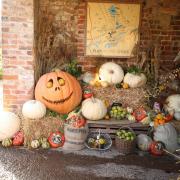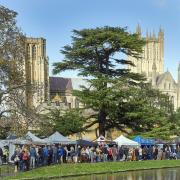Making traditional wooden flagpoles is a niche craft being kept alive by an Exmoor company, as Clare Bourke discovers. Other than helping fire crews fight fires, what other uses would you expect for a fire engine? Transporting newly made wooden flagpoles across remote parts of Somerset, of course!
Well, that’s the solution Mark Stoddart was looking for after launching The Wooden Flagpole Company 10 years ago from a small workshop in Milverton.
Transporting flagpoles to their destination proved something of a difficult task until a friend suggested buying a fire engine. Mark rose to the challenge and is now the proud owner of an old fire engine that has been adapted to carry flagpoles.
Father-of-four Mark, 52, lives in Fitzhead, a small hamlet near Wivesliscombe, with his teacher wife Nicola, just a few miles from his workshop.
For four days of the week he works for a technology company near Marlow in Buckinghamshire and the rest of the time is devoted to learning more about his craft.
But why did he choose flagpoles?
“I set up the business just because I was told by someone that you couldn’t get wooden flagpoles in the UK anymore. I did some research and found there were some in the US but none in the UK,” says Mark.
Mark admits he had no idea what he was doing at first but was forced to learn quickly following an enquiry.
He explains: “I built a website about flagpoles but I had never made one at that point. About a week later I had a call from someone in the RAF who couldn’t find anyone in the UK to make flagpoles and they wanted a 45ft flagpole and yard arm.
“I drove there one day and walked around this flagpole just looking at it, knowing I had never made one. But I am an optimistic person so we took on the project and nine months later they had their flagpole.”
It took about two years for Mark and retired woodwork teacher and cabinet maker Peter Sharman to find the best way to make them, gradually honing their craft.
Contrary to what you might think, the company’s wooden flagpoles are not made from one continuous piece of wood but from strips of laminated timber. These strips are glued together before being shaped on a lathe and then finished by hand.
Mark says: “It is very difficult to get the length you want so you have to join the pieces of timber together. Laminating timber is a growth market. It is stronger than steel on a weight by weight basis.”
The square base is then planed and heavy chamfers cut by hand to provide an octagonal transition between the square and cylindrical cross sections. The flagpole is then carefully sanded before applying several coats of the selected finish. The traditional finish is usually white but they can be supplied with several coats of clear varnish to show off the grain of the timber.
As Mark explains: “They are time consuming to make. A typical flagpole takes six weeks from start to finish.
“The quality of the timber available now compared to what we had when flagpoles were traditionally made of wood is not as good. The wood tends to be grown commercially so grows faster and therefore typically has more knots in it and is not so strong. You have to take the knots out first but provided the poles are painted and varnished they will last longer than a glass fibre flagpole.”
And it’s not just creating bespoke flagpoles but also renovating them that is keeping Mark and his team in high demand across the UK.
“It’s a rewarding thing to do. We have been working with the National Trust on some projects and on other historical buildings, putting them back as they should be using traditional wood, not fibreglass.”
But there is also demand from those wanting to fly the flag at home: “A lot of our customers have lovely houses with lovely gardens and are a little bit patriotic so they want a hand crafted flagpole that has been made just for them.”
Historically all flagpoles were made from timber until glass fibre was developed at which point many people chose to buy glass fibre or aluminium alloy, due to cost and a perceived, potentially longer life.
Mark’s flagpoles are made from oak, Douglas fir, iroko or larch. All the timber used comes from sustainable and responsible forest management schemes. Douglas fir is sourced from Canada and oak comes from France.
As well as Peter and Mark, another important member of the team is Mark White, aka Chalky, a blacksmith and master welder, who makes the steel tabernacles and brackets.
According to Mark, there are only three other places in the country that make flagpoles but not in the same way, one making them from fibreglass, another making them from solid wood and a third primarily making masts.
So this should be a lucrative business then?
“Yes, it should be,” Mark laughs, “but we don’t do any sales or marketing and we only work on the business part time.
“It’s more of a hobby but I would like to do more of it. It’s quite a rewarding thing to do a project from scratch. There’s a lot of pride you can take in this work.
“The dream is to stop working full time and instead work three days a week and work the rest of the time on the flagpoles and growing the business. We do between 10 and 20 projects each year on a part time basis and last year was our best year ever.”
PHOTOGRAPHY: CHRIS GLADSTONE








